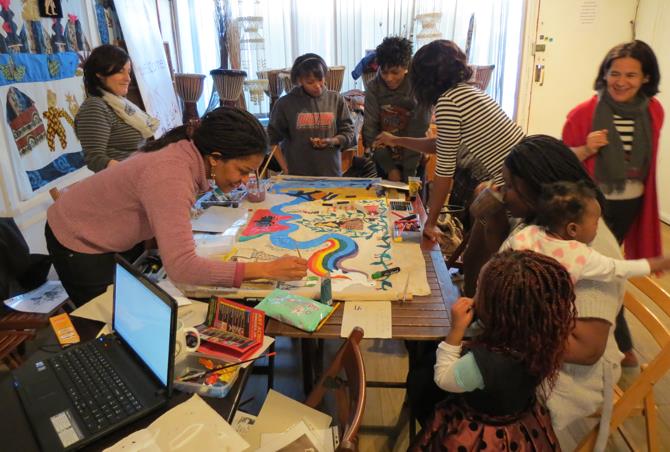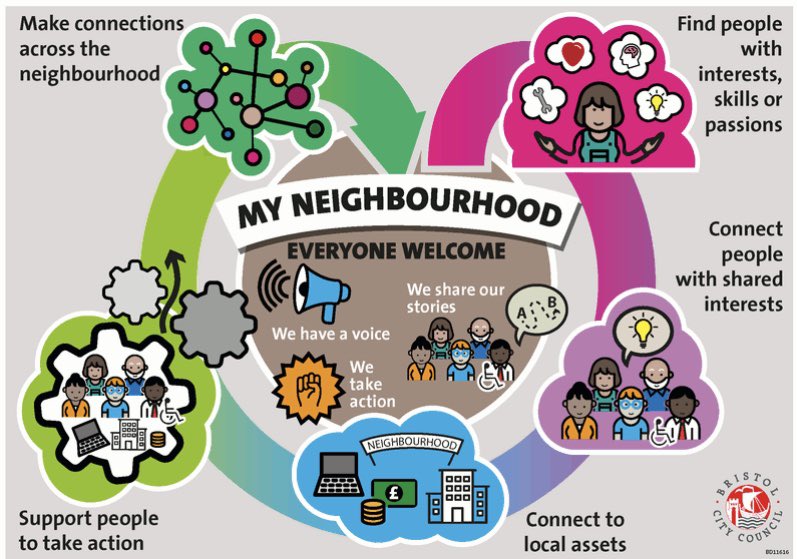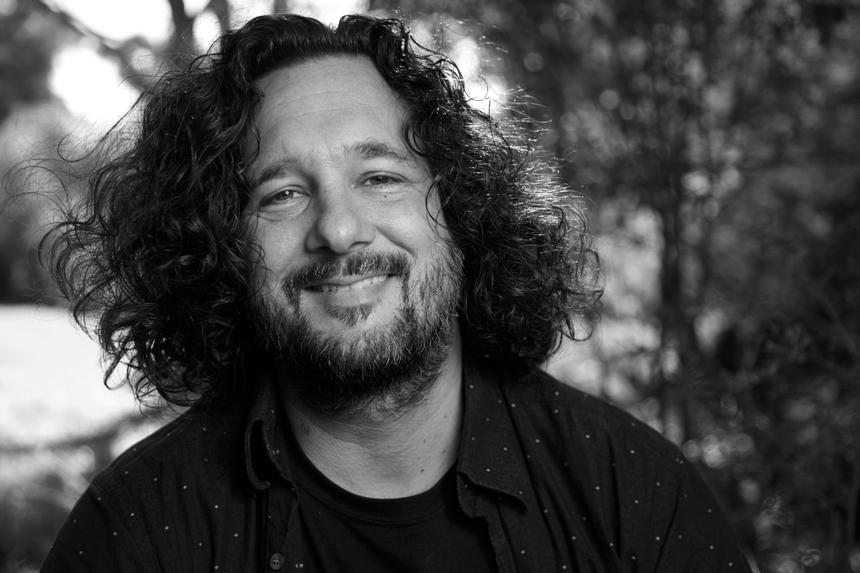Communities are vital in times of crisis. This is where people found their own solutions to help each others at the start of the COVID19 pandemic, way before public services could do anything for the citizens.
We need to engage with them but we need to do it the right way.

Some answers in “How Indigenous Thinking Can change the World”.
Tyson Yunkaporta lives in Australia. Angie Tangaere works with communities in New Zealand.
The video below covers more than Community, and even though it’s a bit long, it’s a really good watch.
Tyson Yunkaporta describes 4 stages: Respect –> Connect –> Reflect –> Direct
- First you learn the ‘Law of the land’ , you learn the needs of the land and the community you will be serving, you establish your ethical framework, so you will come to that system the right way, as an agent of sustainability and connectivity
- You are then ready to connect, this is the work of the heart
- Next, you go and reflect, this is the work of your head
- and finally you direct, this is the work of the hand

This can also be seen as:
- Axiology: you start with your guts, your values, your ethics, your spirit, this seat in your belly (it has its own nervous system) this is the big mind, and a different time of cognition
- Ontology: this is the work of your heart in building relations and connecting
- Epistemology: this is the work of your head thinking together in aggregating, bringing the stories together and building your knowledge and theory models
- Methodology: this is the work of your hands, the practical work
For Angie Tangaere, engagement is long term
“We don’t engage with people because of a project. You engage with them for authentic relations that are enduring beyond whatever we are going to be doing together = we are connected.”
– Angie Tangaere
Most of the time, we begin with the problem, the deficit, but you need to start with the relationship:
- who am I?
- Who are you?
- how are we connected?
- how do we remain connected?
- how do I continue to care for you, regardless of what we are doing in terms of the work?
“We need reciprocity in this relationship, recognise your power, what people bring in this relationship, particularly: knowledge needs to be valued .”
– Angie Tangaere
During the COVID19 crisis, Angie saw that the multi agencies system response was way faster. They managed to unlock and release resources very quickly compare to similar situations pre-COVID. So what was different? In most cases, it’s because the usual criteria for eligibility were bypassed or removed. They had to trust the community.
Closer to home, Anita Kerwin-Nye is saying the same thing:
” Funders have started to adapt with easier funding application processes and moving away from age old perceptions about who could be trusted with money and towards getting money into the hands of the community activists solving the problems in real time.”
Lessons from the community response to COVID19
The whole report from the research done by the Scottish Community Alliance is worth reading but here are some key points:
- Community organisations have been able to ensured local needs were assessed and responded quickly while simultaneously adapting their operations to cope with a fast changing environment.
- The particular role they play within their communities, coupled with their ability to adapt quickly, has enabled them to develop specific responses, tailored to local needs and where they are most needed.
- They have leveraged additional support for their community during the crisis both by drawing on their deep-rooted connections with the myriad local groups in their area and by drawing on the support of wider, regional networks through which they have been able to funnel national funding down to the local level.
- Decisions should be taken and activities coordinated at the most local level practicable.
- The pandemic has demonstrated that decisions taken by those who understand the needs of their communities lead to better outcomes.
- For the same reason, responsibility for allocating resources should be as close to communities as possible.
This requires relationships based on trust between national government and local authorities and between government at all levels and community organisations.
Lived experience as a personal expertise
“It’s about how we value the expertise that comes through living in that community”
– Anita Kerwin-Nye
There is two sides to this:
- recognising that the people from the community have a lived experienced which makes them expert in this area
- as an outsider, you need to think about what you bring with you, this is the “Who am I?” from Angie Tangaere earlier; what is your own lived experience, what do you carry? what do you know or think you know?
In Unlearning being an expert, Sarah Stachowiak thinks about her own personal background:
“It’s undeniable that being a parent has given me a set of insights that I didn’t have otherwise. I know what it’s like to live in different parts of the country. In a small town in northeast Texas. To be a woman. To be white. To be a white woman.
Yet those things are inextricably tied up in how I understand the world. And, if unexamined, risk me thinking that my experience is the experience and blind me to others’, making my work of lower quality and relevance. If I better consider and interrogate those facets of my experience and how they come into in my work, maybe I could have greater humility around the things that I don’t have the same personal expertise in.”
Local communities
With COVID preventing travel and commuting, a lot of people have discovered local groups and assets within their community.
Very quickly people started to find ways to help others locally. A lot of small businesses and even companies had to change overnight: restaurants started delivering meals, farmers selling direct to customers. Others sewing masks or making face shields.

Quite often, the people serving a community don’t live in that community, especially if this is a ‘disadvantaged’ community. Teachers, police, social workers, GPs, executives at the council, they only work there. They might not understand what it is like to live there and as a result don’t really engage or understand the community.
This video from Twitter showing Yusuf Abdul-Qadir talking about how only 5% of the police of Syracuse New York live in the city they serve.
“They [the police not living in the city] take their money [salaries] …, go to outside the city, pay taxes in those communities that have some of the best schools, while we have an underfunded school district …
…so we are funding for other people’s communities to have the promise of the American dream while we are denying it in our community.”
– Yusuf Abdul-Qadir
“We need to develop much more localised ways of working, bringing public bodies and communities together, so that when we need it we have the relationships, trust and ways of working we need in place already.”
– Martin Avila, Kinning Park Complex (From the Scottish Community Alliance report)
Online communities – connecting wider
A lot of communities of practice are online. I’m part of quite a few. They used to have monthly face to face meetings as well as the online space. With the pandemic, every meetings, talks, conferences have moved online.
This means new people could take part, either because they didn’t have to travel, or because it felt easier and less challenging to take part in a virtual space rather than joining in person.
This also means that some people who are not as digital as others, or living in a place with poor network could not take part anymore. We need to be careful to strike the right balance moving forward between physical meetings and online ones so everyone can engage in their preferred way and has a seat at the table.
Increase vs growth
“Aborigen people don’t have a growth system, they have an increase system. You don’t need to grow your brain to be smarter, you need to increase the number of connections and relations”
– Tyson Yunkaporta

Similarly, we probably don’t need communities to grow much bigger in most cases, but there is a great opportunity to increase our connections and learn from each others’ specificities.
As Lorri Smyth once told me, we can pollinate each others, become a system with lots of agents/nodes/people with an agency in a complex adaptive system, where we exchange information all the time.
This is the kind of blog post where I put together various sources about one theme in one place, mostly for me to be able to go back to, but hope it might be useful to others.
More links about this:
- Assets Based Community Development: “Build on what’s strong, not what’s wrong”
- If you are not familiar with Community Development, check this website and learn about it in 60 seconds
- About valuing the knowledge of people with lived experienced and more: Why Design Researchers should compensate participants by Sarah Fathallah
- You might also be interested in this previous blog post: Self organisation, how do we give the power back to the people
- The Community Canvas, a framework to help you build stronger communities